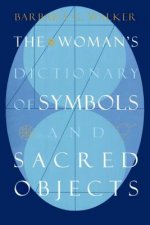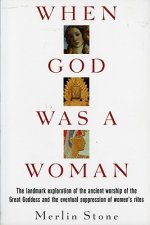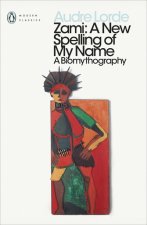
Code: 06667060
Origins of Visual Culture in the Islamic World
by ALAMI MOHAMMED HAMDO
In tenth-century Iraq, a group of Arab intellectuals and scholars known as the Ikhwan al-Safa began to make their intellectual mark on the society around them. A mysterious organisation, the identities of its members have never be ... more
- Language:
 English
English - Binding: Hardback
- Number of pages: 200
Publisher: Bloomsbury Publishing, 2015
- More about this

You might also like
-

What the Bible Says is in Your Hand!
18.10 € -24 % -

Historic Preservation
44.07 € -

Scheme
13.58 €
Give this book as a present today
- Order book and choose Gift Order.
- We will send you book gift voucher at once. You can give it out to anyone.
- Book will be send to donee, nothing more to care about.
More about Origins of Visual Culture in the Islamic World
You get 467 loyalty points
 Book synopsis
Book synopsis
In tenth-century Iraq, a group of Arab intellectuals and scholars known as the Ikhwan al-Safa began to make their intellectual mark on the society around them. A mysterious organisation, the identities of its members have never been clear. But its contribution to the intellectual thought, philosophy, art and culture of the era - and indeed subsequent ones - is evident. In the visual arts, for example, Hamdouni Alami argues that the theory of human proportions which the Ikwan al-Safa propounded (something very similar to those of da Vinci), helped shape the evolution of the philosophy of aesthetics, art and architecture in the tenth and eleventh centuries CE, in particular in Egypt under the Fatimid rulers. With its roots in Pythagorean and Neoplatonic views on the role of art and architecture, the impact of this theory of specific and precise proportion was widespread. One of the results of this extensive influence is a historic shift in the appreciation of art and architecture and their perceived role in the cultural sphere. The development of the understanding of the interplay between ethics and aesthetics resulted in a movement which emphasised more abstract and pious contemplation of art, as opposed to previous views which concentrated on the enjoyment of artistic works (such as music, song and poetry). And it is with this shift that we see the change in art forms from those devoted to supporting the Umayyad caliphs and the opulence of the Abbasids, to an art which places more emphasis on the internal concepts of 'reason' and 'spirituality'.Using the example of Fatimid art and views of architecture (including the first Fatimid mosque in al-Mahdiyya, Tunisia), Hamdouni Alami offers analysis of the debates surrounding the ethics and aesthetics of the appreciation of Islamic art and architecture from a vital time in medieval Middle Eastern history, and shows their similarity with aesthetic debates of Italian Renaissance.
 Book details
Book details
Book category Books in English Society & social sciences Society & culture: general Social groups
185.87 €
- Full title: Origins of Visual Culture in the Islamic World
- Subtitle: Aesthetics, Art and Architecture in Early Islam
- Author: ALAMI MOHAMMED HAMDO
- Language:
 English
English - Binding: Hardback
- Number of pages: 200
- EAN: 9781784530402
- ISBN: 9781784530402
- ID: 06667060
- Publisher: Bloomsbury Publishing
- Weight: 382 g
- Dimensions: 150 × 223 × 24 mm
- Date of publishing: 17. April 2015
Trending among others
-

Women Who Run with the Wolves
9.85 € -16 % -

Orientalism
11.06 € -22 % -

Women Who Run With The Wolves
15.39 € -19 % -

Manipulated Man
12.47 € -26 % -

Inuit Stories of Being and Rebirth
26.96 € -24 % -

Who Cooked the Last Supper?
19.82 € -6 % -

Qur'an
30.08 € -28 % -

The Mastery of Love
12.27 € -19 % -

Second Sex
15.19 € -28 % -

Nice Girls Don't Get The Corner Office
9.75 € -24 % -

The Bell Curve
17.40 € -27 % -

Woman's Dictionary of Sacred Objects
27.36 € -4 % -

Talking with Female Serial Killers - A chilling study of the most evil women in the world
10.25 € -28 % -

1491 (Second Edition)
17.20 € -14 % -

Life After Darkness
20.42 € -24 % -

Beautiful Bottom, Beautiful Shame
31.39 € -

Fervent
15.69 € -17 % -

Coming Apart
14.58 € -23 % -

Plot
16.70 € -17 % -

Trans Exploits
29.48 € -9 % -

The Way of Men
13.27 € -22 % -

When God Was A Woman
19.61 € -1 % -

The Velvet Rage
16.19 € -23 % -

Between The World And Me
12.27 € -21 % -

Freedom Writers Diary
15.29 € -8 % -

How Europe Underdeveloped Africa
22.93 € -

Empire of the Summer Moon
14.38 € -22 % -

Culture of Critique
23.94 € -16 % -

Complete Persepolis
23.54 € -15 % -

We Should All Be Feminists
6.93 € -30 % -

Lean In
12.87 € -22 % -

Beauty Sick
11.26 € -28 % -

Witches, Midwives, And Nurses
11.87 € -2 % -

Gender Trouble
27.16 € -

Indigenous Peoples' History of the United States
15.39 € -17 % -

Atlas of Indian Nations
33.70 € -25 % -

Women, Race, & Class
12.97 € -28 % -

Joy of Gay Sex
20.42 € -18 % -

Way of All Women
30.18 € -15 % -

Tom of Finland. The Complete Kake Comics
21.12 € -

Goddesses in Everywoman
12.27 € -21 % -

The Male Nude
18.31 € -8 % -

The Autobiography of Malcolm X
10.56 € -6 % -

Why Does He Do That?
16.49 € -13 % -

Zami
10.05 € -24 % -

Humans of New York
25.75 € -16 % -

Iron John
16.29 € -22 % -

Notes of a Native Son
10.05 € -24 % -

Story of the Jews
13.17 € -21 %
Collection points Bratislava a 2642 dalších
Copyright ©2008-24 najlacnejsie-knihy.sk All rights reservedPrivacyCookies



 15549 collection points
15549 collection points Delivery 2.99 €
Delivery 2.99 € 02/210 210 99 (8-15.30h)
02/210 210 99 (8-15.30h)